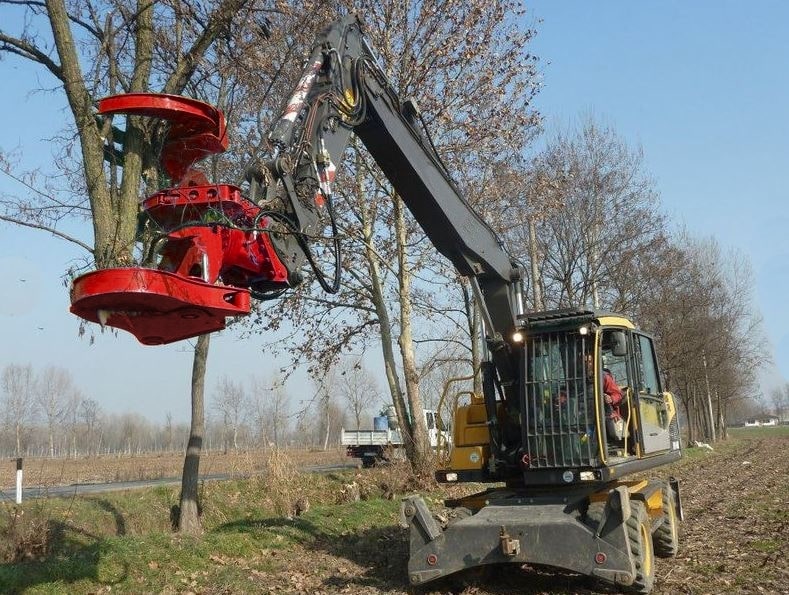
The most challenging part of killing a tree is removing the tree stump. The tree stump is usually the remaining portion of the trunk connected to the roots that are still underground.
You will need to call in the “big guns” to remove a tree stump – that is, an excavator. In this article, we’ll help you find the right size of excavator for that pesky stump!
What are the different types of excavators?
1. Small Excavator
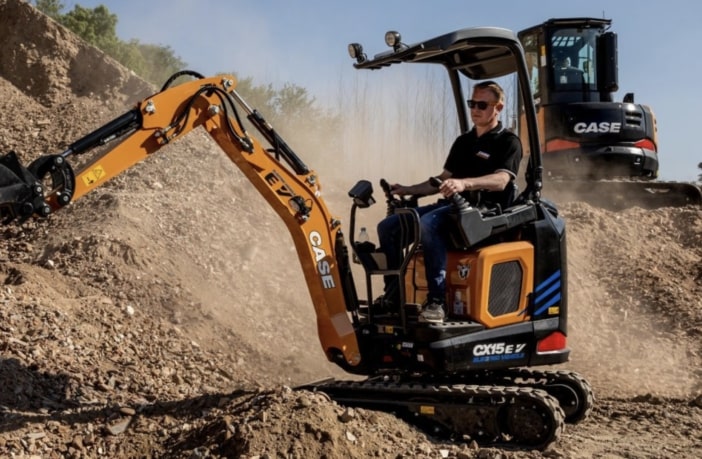
These mini excavators can handle 1 to 20 tons of weight. You can use them for stump removals in your backyard.
Other uses include work in tight spaces and small-scale landscaping.
2. Medium Excavator
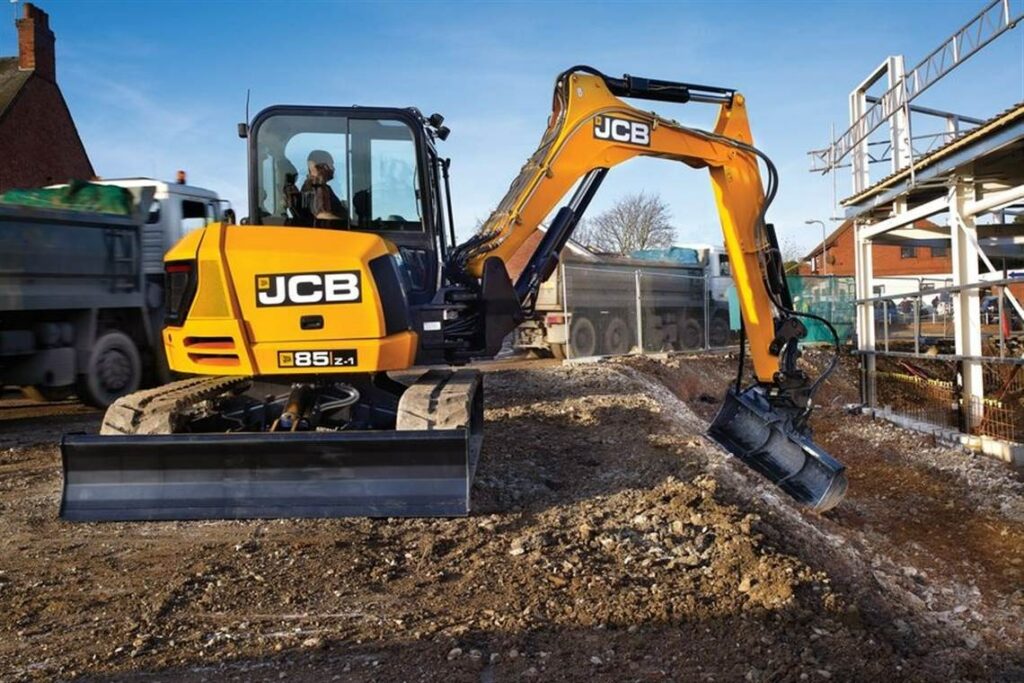
Medium-sized excavators can handle 20 to 50 tons of weight. They are usually used for small demolition projects, tree stump removal, and digging a lake or a pond.
This excavator can also be used for trenching, light construction projects, and handling raw materials.
What size excavator is best for removing stumps?

It’s best to use a small excavator when removing stumps of small to medium-sized trees. In contrast, a medium-sized excavator is suggested for large trees.
Here’s a comparison between the two excavator sizes for removing tree stumps:
| Small Excavator | Medium Excavator | |
| Weight | 1 to 20 tons | 20 to 50 tons |
| Type of Tree | Small trees (less than 15 feet) Medium trees (15 to 40 feet) | Large trees (40 feet above) |
| Examples | AlmondCrabappleDwarf AlbertaEastern RedbudGoldenball LeadtreeHinoki CypressCrape MyrtleFlowering DogwoodPaper BirchJapanese MapleServiceberry | Coast RedwoodDouglas firGiant Mountain AshGiant sequoiaBhutan CypressSouthern Blue GumManna GumKlinki PineString barkRed CedarEucalyptus regnans |
Factors to consider before using an excavator
There are two main factors to consider when choosing an excavator – the weight of the tree stump and root ball.
Let’s find out how to calculate these and their estimates for popular tree species.
Weight of the tree stump
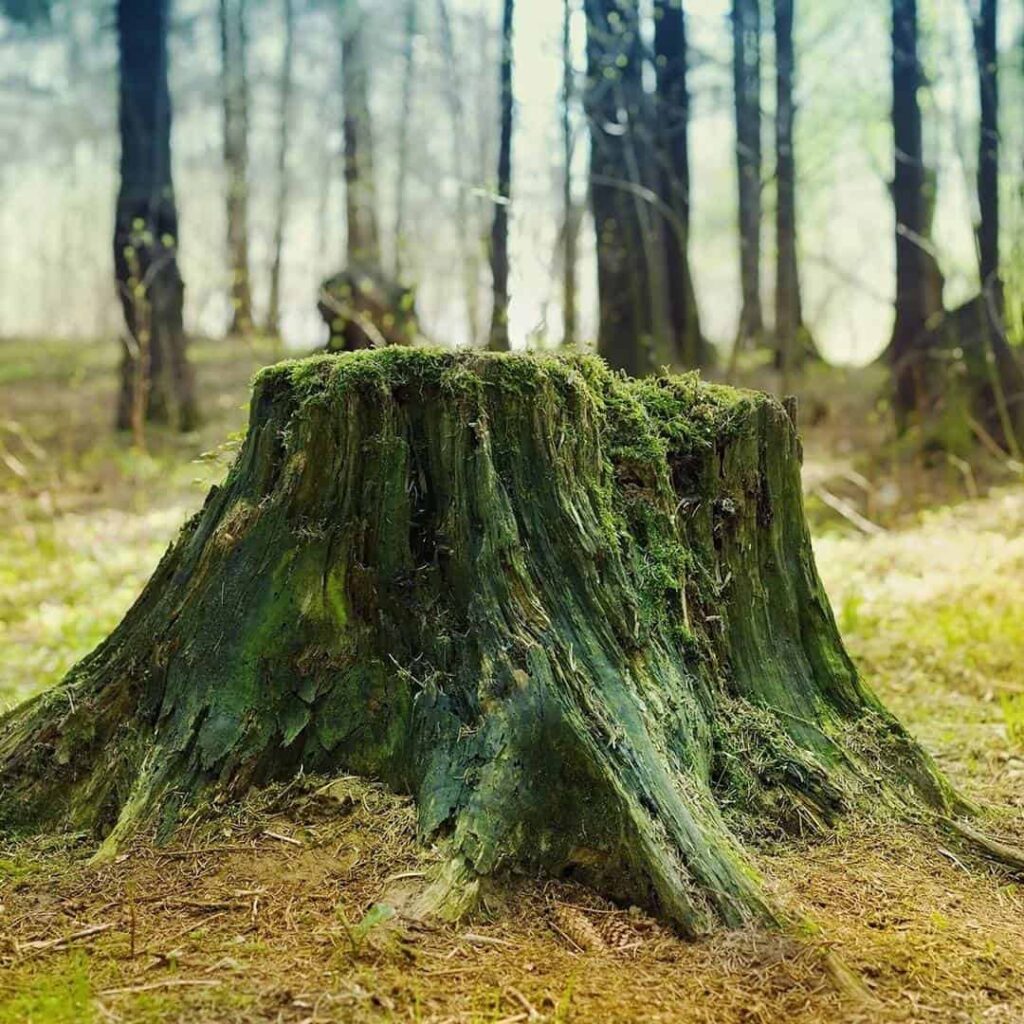
The tree stump is the primary consideration for an excavator.
To calculate the weight of a tree stump, we will use this formula:
Weight = Volume*Density
- Begin with finding the volume of the tree stump by multiplying pi or 3.14 with ½ of the diameter and height (V = 3.14*½ r*height).
- After getting the volume, you can multiply the answer by the density of the wood to get an estimated weight of the tree stump. (See the chart below)
Here is the list of the wood densities per cubic feet of the most common tree species to complete your variables for the weight formula:
| Tree Species | Wood Density per Cubic Feet |
| Apple | 55 |
| White Ash | 48 |
| Basswood | 42 |
| Beech | 54 |
| Paper Birch | 50 |
| Yellow Birch | 57 |
| Butternut | 46 |
| Black Cherry | 45 |
| Chesnut | 55 |
| Cottonwood | 49 |
| American Elm | 54 |
| Black Gum | 45 |
| Red Gum | 50 |
| Hackberry | 50 |
| Hickory | 64 |
| Honey Locust | 61 |
| Evergreen Magnolia | 59 |
| Red Maple | 50 |
| Silver Maple | 45 |
| Sugar Maple | 56 |
| California Oak | 66 |
| Live Oak | 76 |
| Red Oak | 63 |
| White Oak | 62 |
| Pecan | 61 |
| Persimmon | 63 |
| Yellow Poplar | 38 |
| Sassafras | 44 |
| Sycamore | 52 |
| Black Walnut | 58 |
| White Pine | 36 |
| Red Spruce | 34 |
If you do not want to manually calculate the weight of the tree stump, here is a table of the estimated weight of 1-foot-long tree stumps of popular trees per average diameter:
| Species | 10” | 12” | 14” | 16” | 18” | 20” | 22” | 24” | 26” | 28” |
| Apple | 30 | 43 | 59 | 77 | 97 | 120 | 145 | 173 | 203 | 235 |
| White Ash | 26 | 38 | 51 | 67 | 85 | 104 | 126 | 150 | 177 | 205 |
| Basswood | 23 | 33 | 45 | 59 | 74 | 92 | 111 | 132 | 155 | 180 |
| Beech | 29 | 42 | 58 | 75 | 95 | 118 | 142 | 169 | 199 | 231 |
| Paper Birch | 27 | 39 | 53 | 70 | 88 | 109 | 132 | 157 | 164 | 214 |
| Yellow Birch | 31 | 45 | 61 | 80 | 101 | 124 | 151 | 179 | 210 | 244 |
| Butternut | 25 | 36 | 49 | 64 | 81 | 100 | 121 | 144 | 170 | 197 |
| Black Cherry | 25 | 35 | 48 | 63 | 79 | 98 | 119 | 141 | 166 | 192 |
| Chesnut | 30 | 43 | 59 | 77 | 97 | 120 | 145 | 173 | 203 | 235 |
| Cottonwood | 27 | 38 | 52 | 68 | 86 | 107 | 129 | 154 | 180 | 209 |
| American Elm | 29 | 42 | 58 | 75 | 95 | 118 | 142 | 169 | 199 | 231 |
| Black Gum | 25 | 35 | 48 | 63 | 79 | 98 | 119 | 141 | 166 | 192 |
| Red Gum | 27 | 39 | 53 | 70 | 88 | 109 | 132 | 157 | 164 | 214 |
| Hackberry | 27 | 39 | 53 | 70 | 88 | 109 | 132 | 157 | 164 | 273 |
| Hickory | 35 | 50 | 68 | 89 | 113 | 140 | 169 | 201 | 236 | 261 |
| Honey Locust | 33 | 48 | 65 | 85 | 108 | 133 | 161 | 192 | 225 | 252 |
| Evergreen Magnolia | 32 | 46 | 63 | 82 | 104 | 129 | 156 | 185 | 217 | 214 |
| Red Maple | 27 | 39 | 53 | 70 | 88 | 109 | 132 | 157 | 164 | 192 |
| Silver Maple | 25 | 35 | 48 | 63 | 79 | 98 | 119 | 141 | 166 | 239 |
| Sugar Maple | 31 | 44 | 60 | 78 | 99 | 122 | 148 | 176 | 206 | 282 |
| California Oak | 36 | 51 | 70 | 92 | 116 | 144 | 174 | 207 | 243 | 324 |
| Live Oak | 41 | 60 | 81 | 106 | 134 | 166 | 200 | 238 | 280 | 269 |
| Red Oak | 34 | 49 | 67 | 88 | 111 | 137 | 166 | 198 | 232 | 265 |
| White Oak | 34 | 48 | 66 | 86 | 109 | 135 | 163 | 194 | 228 | 261 |
| Pecan | 33 | 48 | 65 | 85 | 108 | 133 | 161 | 192 | 224 | 269 |
| Persimmon | 34 | 49 | 67 | 88 | 111 | 137 | 166 | 198 | 232 | 162 |
| Yellow Poplar | 21 | 30 | 40 | 53 | 67 | 83 | 99 | 119 | 150 | 188 |
| Sassafras | 24 | 34 | 47 | 61 | 78 | 96 | 116 | 138 | 162 | 222 |
| Sycamore | 28 | 41 | 55 | 72 | 92 | 113 | 137 | 163 | 191 | 248 |
| Black Walnut | 32 | 45 | 62 | 81 | 102 | 126 | 153 | 182 | 213 | 250 |
| White Pine | 20 | 28 | 38 | 50 | 64 | 78 | 95 | 113 | 128 | 145 |
| Red Spruce | 19 | 27 | 36 | 47 | 60 | 74 | 90 | 106 | 125 | 154 |
Weight of the root ball
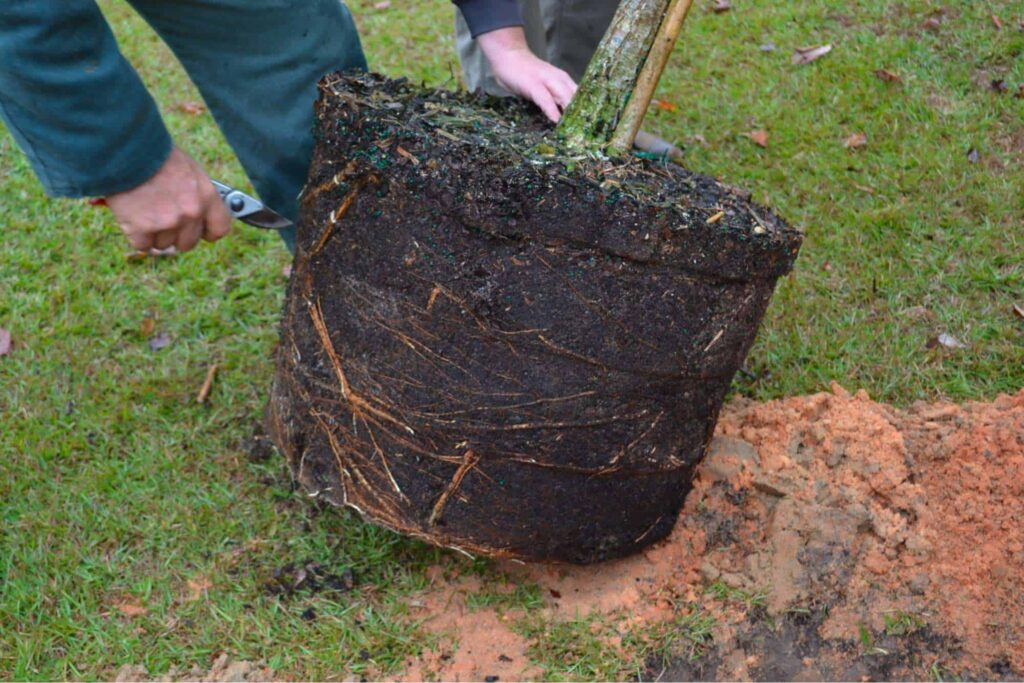
You also need to consider the weight of the root ball of a tree when removing the tree stump.
Here is the weight of the root ball of a tree depending on its average diameter and rootball size.
| Weigh (lbs) | Size of Rootball | Average Diameter of Rootball |
| 400 | 24-28 | 2-2.5 |
| 650 | 28-32 | 2.5-3 |
| 850 | 32-36 | 3-3.5 |
| 1200 | 36-40 | 3.5-4 |
| 1500 | 40-45 | 4-4.5 |
| 2500 | 50-55 | 4.5-5 |
| 3000 | 55-62 | 5-5.5 |
| 4000 | 62-66 | 5.5-6 |
| 5000 – 6000 | 66-72 | 6-7 |
| 6000 | 72-76 | 7-8 |
| 7000 – 8000 | 84-90 | 8-10 |
How to remove a tree stump with an excavator
Here is a step-by-step guide on how to remove a tree stump using an excavator.
1. Dig a trench.
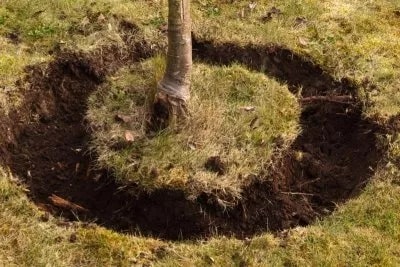
Begin by digging a trench 3 feet wide and 8 feet deep around the tree stump.
You can also pull away the loose roots and find the weight of the root ball underneath to choose the correct excavator size.
2. Find the roots.
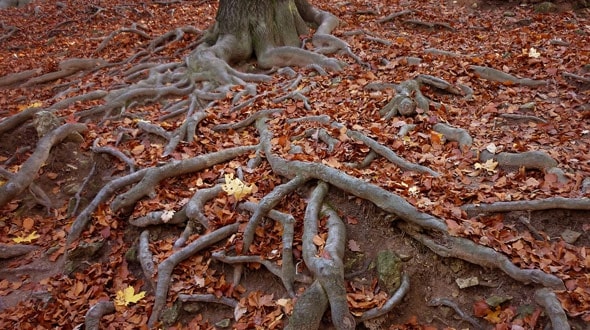
Locate the thinnest roots and push the tree stump away from them.
You can now use the excavator to move the stump toward the roots and pull it from the ground.
3. Scoop the stump away from the hole.
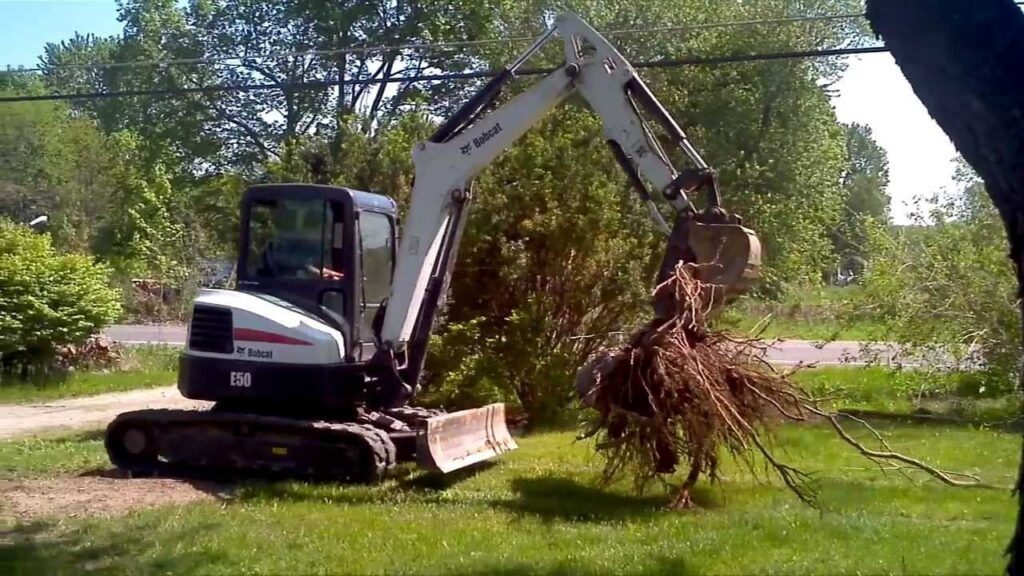
Get the right angle to wedge the stump out of the hole and roll it several feet away.
4. Fill the trench with organic materials.
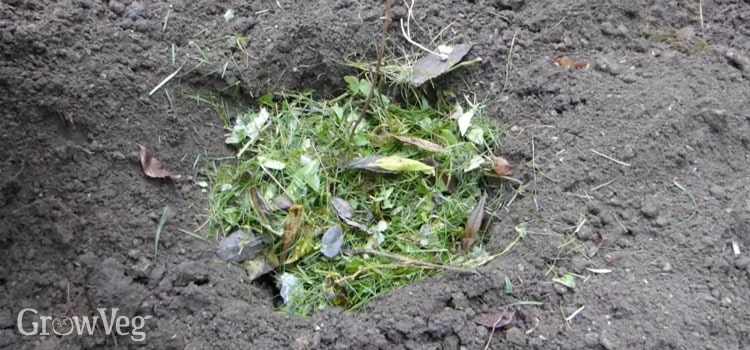
Refill the hole with grounded stump bits, wood chips, and other organic matter. Finish off by toping the hole with compact soil and flattening the ground evenly.
Other Frequently Asked Questions
It is better to grind tree stumps than dig a hole to remove them. Stump grinders chew away the remaining trunk and grind the root system below the ground, thereby preventing further regrowth.
Stump grinding is different from stump removal. In stump grinding, the equipment chews the trunk and roots to pieces, while stump removal requires digging a hole and using equipment to pull the stump from the ground.
You will need less than 60 kilonewtons to wholly uproot a tree stump with less than or equal to 61 centimeters in diameter.
To calculate the stump diameter, measure the tree’s circumference at 6 inches above the ground.
It takes ten years for a tree stump to disappear by natural process. However, if you apply potassium nitrate, it will speed up the tree stump’s rotting process.




